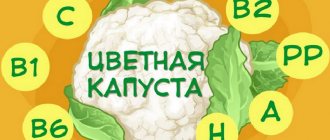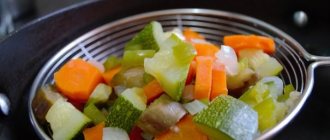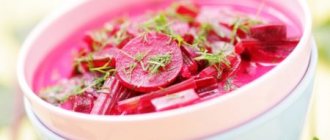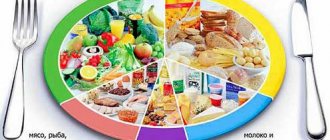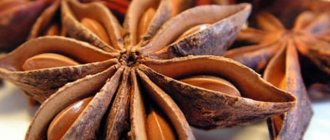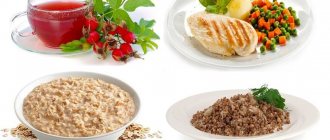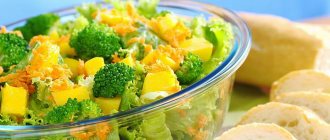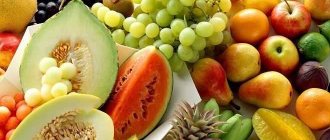Cabbage is a forbidden vegetable for pancreatitis.
Inflammation of the pancreas, or pancreatitis, is a very serious disease, and therefore food restrictions must be observed when using medications. Is cabbage included in this list? After all, this product is used to prepare many dishes. To answer this question, we must take into account that there are a lot of varieties of cabbage, as well as ways of preparing it. What doctors advise for pancreatitis, the clear answer is that cabbage should be excluded.
Stewed cabbage for acute forms of the disease
During the acute form of the disease, the pancreas requires drug treatment and a strict diet. In the first three days, the patient is on a fasting diet, then foods with a reduced fat and fiber content are introduced. It is for this reason that white cabbage is not recommended for use during exacerbations. Even with the naked eye you can see the fibers running throughout the vegetable.
Other varieties of cabbage - Chinese cabbage, cauliflower, broccoli - have lower fiber content and can be introduced into the patient’s diet around the fifth day. It is better not to eat them raw; it is necessary to cook the vegetables. The white cabbage variety of the product is allowed after the first week of the diet only in stewed form, preferably with the addition of zucchini. Doctors do not allow cabbage to be consumed fresh or sauerkraut, even during remission.
What is pancreatitis
Pancreatitis is an inflammatory process in the pancreas. There are several reasons for the occurrence of this disease: alcoholism, abdominal injuries, frequent colds, complications after viral infections, diseases of the gastrointestinal tract, gall bladder malfunctions, excess weight, abuse of fatty, fried and sweet foods.
Pancreatitis is an inflammation of the pancreas that can be acute or chronic
Is it possible to eat cabbage with chronic pancreatitis?
People live with a diagnosis of chronic pancreatitis all their lives. To avoid sudden exacerbations, the patient should not deviate from the existing diet. Meals should be frequent and consist of small portions. All fried, smoked and salted foods are completely excluded; steaming or stewing of foods is allowed. You can diversify your diet table with stewed cabbage. During stewing, the vegetable loses most of its fiber and essential oils, which can irritate the mucous membrane of the gland. After heat treatment, the product does not lose its beneficial vitamins and minerals. You should not completely give up the vegetable - it is too beneficial for the body.
Before eating stewed cabbage, you can try adding it a little to the first dishes. If vomiting or diarrhea does not occur, you can try stewed vegetables, but you should not eat too large portions in the first days.
What kind of cabbage can you eat?
There is a general opinion that cabbage should not be eaten if you have pancreatitis. It's not entirely correct. This vegetable has many types, and some of them are prohibited, while others are recommended for pancreatitis.
The name "cabbage" comes from the Roman "caputum", which means "head". Songs and legends were written about her. One of them says that the first cabbage appeared on Earth in time immemorial from drops of sweat of a deity named Jupiter, which rolled down his face during heavy thoughts. Today the vegetable is popular all over the world. At the same time, the demand for cabbage in Russia is eight times higher than, for example, in the USA.
Beijing
The fiber in this variety of cabbage is soft and tender. Therefore, it is recommended to include it in the menu of patients with chronic pancreatitis during remission . During the period of exacerbation of the disease, it is better to refrain from Chinese cabbage, despite the fact that this variety is rich in pectin substances, carbohydrates, proteins, vitamins PP, B1 and B2. It is advisable to stew this product with carrots, zucchini and herbs. This composition is beneficial for the pancreas and serves to prevent the occurrence of diabetes.
The use of Chinese cabbage for pancreatitis is allowed during the period of remission
Colored
Cauliflower is low in calories, has a delicate texture, and has minimal fiber. In addition, it activates the gastrointestinal tract and eliminates constipation, stabilizes the acid level of the stomach, participates both in the synthesis of useful substances and in the neutralization of waste and the removal of toxins. It is a valuable supplier of B vitamins and vitamins C and U. It is best to include it in the menu in stewed and boiled form. To preserve the amount of healthy substances, it is not recommended to subject this cabbage to prolonged heat treatment .
Cauliflower is a vegetable with a higher education.
Cauliflower comes from Cyprus. Therefore, it is otherwise called Syrian. In Russia, this vegetable became widespread during the reign of Catherine II. It contains twice as many vitamins and proteins as white cabbage, which is why they still say: cauliflower has a higher education.
Broccoli
Eating this type of cabbage often causes colic, stool upset or bloating. Therefore, during the period of exacerbation of the disease, they try to introduce it into the menu only after potatoes and pumpkin, provided that the body reacts normally to them. Broccoli is pureed and combined with casseroles, omelettes, soups, puddings and stews, which significantly increases the nutritional value of dishes. Broccoli contains choline, methionine, potassium, phosphorus, calcium, magnesium, vitamins A, C, B1 and B2, PP, as well as vegetable protein necessary for the restoration of the pancreas. In addition, cabbage contains chlorophyll, which imparts stability to the membranes of the cells of this organ and protects them from the negative effects of pancreatic enzymes.
The maximum daily value for a patient with pancreatitis is approximately 200 g.
The easiest way to buy broccoli is frozen.
Marine
Essential oils, which are present in seaweed and could act as irritants on the gastric mucosa, are destroyed during cooking and stewing, but beneficial substances necessary for the health of the pancreas, such as cobalt and nickel, are preserved. Therefore, steamed seaweed is not only possible, but also should be eaten by patients with pancreatitis during the acute phase and remission, of course, in small portions. This is a very healthy product, which contains iodine, calcium, nickel, magnesium, manganese, cobalt, iron, sodium, phosphorus, potassium, vitamins A, PP, B1, B2, B6, B9, C and beta-carotene.
The recommended dose for patients with chronic pancreatitis is from 100 to 300 g per week.
Sea kale contains nickel and cobalt, which are necessary for the health of the pancreas.
Brussels
Stewed Brussels sprouts solve several important problems facing patients suffering from pancreatitis: it regulates the functioning of the digestive system and strengthens the immune system. Consumption of this vegetable also supports the body in the fight against hypertension, atherosclerosis, arrhythmia and coronary insufficiency.
Brussels sprouts are good not only for the pancreas, but also for the heart, and also strengthens the immune system.
Stewed cabbage recipes
Cabbage for pancreatitis can be consumed in different varieties, each of which has a special taste and invaluable benefits. When preparing dishes, you need to remember that there should be no frying of the product before stewing; oil is added in the smallest quantity. To avoid a heavy load on the gland, it is recommended to add other vegetables with a softer structure to white cabbage. It is better to choose a young vegetable, without rotten leaves. The leaves are cut into thin strips so that the digestive system quickly digests the incoming food.
Beneficial features
First, let's talk about the positive aspects of mowing substances:
- enrichment with vitamin C;
- vitamins are not lost during the cooking process;
- microorganisms have a beneficial effect on intestinal function;
- eliminating harmful bacteria.
White cabbage is a dietary and low-calorie product. It contains tartronic acid, which prevents the accumulation of fat in the body. It also contains a huge amount of amino acids that bind and dissolve foreign proteins.
Attention! Sauerkraut contains more useful substances than fresh vegetables.
Cabbage contains ascorbic acid, B vitamins, iron, copper, zinc, magnesium and much more. The vegetable contains a rare substance, vitamin U. It prevents the development of stomach ulcers. The dietary fiber included in the composition normalizes stool and intestinal microflora. Phytoncides have immunomodulatory properties, making the body resistant to various types of irritants.
Traditional recipe for stewed cabbage.
- Fresh vegetables must be washed under running water.
- It is better to remove the top leaves, they are the toughest.
- Next, the head of cabbage is cut into quarters and finely chopped.
- The hard core is not edible and is discarded.
- The finely chopped product is placed in a pan, carrots grated on a coarse grater and finely chopped onions are added there.
- Do not forget that during heat treatment the vegetable shrinks and releases juice.
- Next, add a little water and sunflower oil to the pan.
- To prevent the dish from burning, it must be stirred periodically. Half an hour before the end of cooking, tomato paste is added to the vegetables.
- In order not to go beyond the dietary limits, add just a little pasta.
Stewed cabbage goes well with meat or other vegetables. To make the dish more satisfying, you can add lean meats - chicken breast, turkey, veal. The vegetable also goes well with zucchini or pumpkin.
Cooking methods and recipes
When the pancreas is inflamed, it is important to prepare food properly. It is prohibited to salt, fry, or season with store-bought sauces.
The dishes should not contain components prohibited for the patient.
Food must be fresh. Temperature is also important: food that is too warm or too cold is harmful. Dishes should be cooled to +35…+40°C.
Boiled
Boiled cabbage is used to make pureed soups and one-component purees. In case of persistent remission, it is allowed to add a small amount of greens, a pinch of salt, ½ tsp to the puree. vegetable oil.
Stewed
You need to simmer without oil. Use water, vegetable broth. In case of stable remission, stewing in milk is acceptable. Stewed vegetables soften, which avoids mechanical damage to the mucous membranes of internal organs.
Stewed cabbage can be used as a component of vegetable stew.
Cabbage prepared in this way can be used as a component of vegetable stew. It is useful to combine it with young zucchini and carrots.
Pickled
You should not eat sauerkraut if you have pancreatic disease. It is too acidic for the damaged organ, contains salt, and is rich in coarse fiber.
Some experts claim that the juice of cabbage fermented according to a special recipe can be beneficial for the patient.
The liquid is taken 50 ml per day. It helps normalize blood sugar levels.
Salad
For salad, you can use heat-treated cabbage. Only Peking is allowed to be consumed fresh. To prepare the salad, take 200 g of cabbage leaves, 2 pre-boiled chicken fillets, 3 eggs, a small boiled carrot and 1-2 tbsp. l. low-fat sour cream. Grind all ingredients and season with sour cream. You are allowed to add a pinch of salt.
Stewed cauliflower
Cauliflower takes less time to prepare, but its taste is not inferior to white cabbage varieties.
- First, the head of cabbage must be disassembled into inflorescences.
- Next, place the pieces of cauliflower in boiling salted water for five minutes.
- The boiled inflorescences are laid out in a frying pan, and grated carrots are added to them.
- You don’t have to add onions, it all depends on a person’s taste preferences.
- Add a little water and sunflower oil to the saucepan and then cover with a lid.
- The dish should be stewed, not fried, so the fire should be as low as possible.
For pancreatitis, cauliflower is great for daily nutrition. It comes in fresh and frozen form, it all depends on the time of year. This vegetable cooks very quickly, and all the beneficial minerals and vitamins simply do not have time to leave the product. In its composition and method of preparation, cauliflower is in many ways similar to broccoli. Even in taste, these varieties are not much different from each other.
Product properties
The effect of this sour vegetable on the human body is very extensive. Let's consider its undeniable benefits and cases when its use can cause harm.
Benefit
Thanks to the rich composition of minerals and vitamins valuable for humans, this product has a positive effect on the human body, namely:
- For the digestive system. Optimizes its functioning, normalizes the intestinal microflora after taking medications, and promotes appetite. Normalizes acidity levels.
- For the nervous system. Improves resistance to stress and nervous disorders. It has a positive effect on the psycho-emotional state, has a calming effect, and eliminates migraines and headaches. Positively affects memory properties and brain function.
- For the cardiovascular system. The fiber contained in the product absorbs cholesterol and reduces its overall level in the body. The juice protects against atherosclerosis, ischemia and tachycardia. The walls of blood vessels are strengthened and the heart rhythm is normalized.
- For the immune system. The vitamin C contained in the product helps maintain the body's protective properties at the proper level. Other vitamins save you from vitamin deficiency and give you strength and vigor.
- To reduce weight. Low calorie content makes the product dietary. In addition, it cleanses of toxins, removes excess salt and liquid, due to which swelling disappears. Thanks to the tartronic acid contained in the product, fat breakdown occurs quickly.
- For rejuvenation of the skin and the whole body. The body is cleansed and tissue restoration at the cellular level is accelerated.
- For male sexual power. Sexual desire and potency increase, blood flow to the genitals increases. With rational use of the product, male reproductive cells become more mobile, and their number increases.
- For pregnant and lactating women. The juice of the product in case of toxicosis prevents nausea, helps with vitamin deficiency, and improves mood. In nursing mothers, milk becomes richer and its quantity increases.
- To relieve a hangover. Brine accelerates the breakdown of ethyl alcohol and its removal from the human body. Relieves the liver of toxins, relieves headaches and painful conditions.
Did you know? Sour cabbage was first prepared in Ancient China, in the 3rd century. BC e. Cabbage fermented in rice wine was fed to the builders of the Great Wall of China.
While providing considerable benefits to the human body, the product can also cause harm. The main deterioration comes from salt, with the help of which the vegetable is fermented. Its excessive consumption is accompanied by bloating, flatulence and heartburn. In addition, salt retains fluid, which leads to swelling of some parts of the body.
Sauerkraut dishes should not be consumed by those who have:
- pancreatitis;
- ulcer of the duodenum and stomach;
- arterial hypertension;
- predisposition to heartburn and increased gas formation;
- cholelithiasis;
- diabetes (if the cabbage is cooked with sugar);
- increased acidity;
- exacerbation of chronic gastritis;
- renal failure.
Let us separately consider the negative impact of the product on people suffering from pancreatitis:
- As a result of an illness of the pancreas, the enzymes and pancreatic juices it produces are extremely insufficient to absorb the coarse fiber of the vegetable. As a result, there is an excess load on the pancreas.
- The acid formed during the ripening of vegetables can cause the production of pancreatic juice along with gastric juice, which can provoke a resumption of inflammation if the acidity is high.
Important! People who have problems with the pancreas should consult their doctor before consuming sauerkraut.
Chinese cabbage
Another variety of vegetables that recently appeared on the table of Russians. Chinese cabbage is rich in vitamins A, PP, E and a high content of ascorbic acid. It has a beneficial effect on the digestive system and pancreas. It can also be stewed together with other vegetables or eaten fresh (only during remission).
A strict diet is also prescribed for patients suffering from a concomitant disease of pancreatitis - cholecystitis. These diseases arise for similar reasons and have almost the same symptoms. A special diet plays an important role in the treatment of cholecystitis, which excludes all fried and smoked foods. Stewed cabbage dishes are included in the permitted list of foods that a patient with cholecystitis can enjoy.
A diagnosis of pancreatitis does not mean the end of life; you can live with it for a long time and not experience any special problems. To avoid exacerbations, it is necessary to follow all doctor’s instructions and follow a diet. You can diversify your diet with stewed cabbage, which is not only healthy, but also very tasty.
https://youtu.be/ZgTHURVK50A
Cabbage in the acute period of illness
During an exacerbation of pancreatitis, you should not eat any cabbage: fresh or thermally processed (boiled, stewed, etc.). Why is this healthy vegetable prohibited for diseases of the pancreas:
- It contains many essential oils and plant acids, which irritate the mucous membrane of the digestive tract, which provokes increased pain and heartburn.
- These substances stimulate an increase in the secretion of digestive juices by the glands of the gastrointestinal tract. With excessive production of pancreatic juice, which consists of many enzymes, even greater damage to the pancreas can occur (self-digestion of its tissue with its own enzymes).
- The large amount of plant fiber contained in the vegetable provokes increased intestinal motility. In acute pancreatitis accompanied by dyspeptic syndrome, eating cabbage can provoke increased nausea, flatulence, abdominal cramps, and diarrhea.
Use during remission
After the inflammation subsides—about a month from the onset of the exacerbation—doctors allow cabbage to be added to the diet. But when choosing this or that type of vegetable, you should know how best to prepare it (boil, stew) so as not to harm the pancreas.
White cabbage
This vegetable contains a large amount of vitamins, minerals, a minimum of starch, and simple carbohydrates (sugars), so it is allowed for diabetes.
Fresh white cabbage should not be eaten to avoid exacerbation of pancreatitis. During stable remission, it is allowed to boil, stew, bake, steam, add to soup, stew, casseroles, cabbage rolls.
Kohlrabi
It is rich in vitamins C, A, PP, group B, microelements (iron, magnesium, zinc), fiber, and vegetable protein. This composition has a beneficial effect on metabolism, immunity, and the state of the cardiovascular system.
But with pancreatitis, at any stage of the disease, it is not recommended to eat this vegetable.
Sea kale
Laminaria, or seaweed, contains a large amount of trace elements, especially iodine. It does not contain essential oils, organic acids that irritate the walls of the gastrointestinal tract, gall bladder, or pancreatic ducts. In addition, kelp contains soft fiber and mucous substances that envelop the epithelial membranes and help calm inflammation.
Such properties make it possible to use this product for pancreatitis, but only during remission of an acute inflammatory process , since the pectin in its composition can provoke the development of diarrhea and aggravate the symptoms of acute inflammation.
Cauliflower, Brussels sprouts, red cabbage, broccoli
These vegetables are the safest for pancreatic pathologies among all types of cabbage. They contain fiber that is softer in structure, which enhances the motility of the digestive tract less than other varieties of vegetables. Thus, they do not aggravate the symptoms of chronic pancreatitis, especially if they are prepared correctly.
You can eat them boiled or stewed with the addition of other vegetables by preparing vegetable puree. Heat treatment eliminates the negative effects of fiber and other components on the digestive organs in case of diseases.
Kohlrabi for pancreatitis
This species visually resembles a turnip rather than a cabbage. Due to the high content of vitamins C in kohlrabi, it received the nickname “Northern Lemon”. The stem fruit is also rich in vitamins A, B2, PP, iron, zinc, magnesium, fiber, fructose, mineral salts and vegetable protein.
Despite the abundance of beneficial properties (removes excess fluid from the body, prevents the accumulation of bad cholesterol, strengthens the heart, improves immunity, etc.), kohlrabi is undesirable for pancreatitis. Its use during the acute stage of the inflammatory process of the pancreas will lead to aggravation of the disease. During the chronic period, they also try to exclude kohlrabi from the diet.
An exception may be patients whose body reacts favorably to this type of cabbage. After a year has passed since the attack and there are no symptoms, with the doctor’s permission and if you love kohlrabi in small quantities, it can be included in the menu.
What harm can sauerkraut do?
One of the most common and beloved dishes by many is sauerkraut. It contains many vitamins, minerals, as well as bacteria and organic acids that accumulate during fermentation during sauerkraut, providing its specific sour taste.
For pancreatitis, sauerkraut is completely prohibited (for any pathology - both acute and chronic), because it has a negative effect on the condition of the pancreas due to its following effects:
- Irritant effect of acids on the mucous epithelium of the stomach and intestines.
- Increased gastrointestinal motility, spasms of the stomach and intestines, which causes abdominal pain, nausea, vomiting, excessive gas formation, and intestinal upset.
- Fluid retention due to the large amount of salt in sauerkraut. Excess water causes swelling throughout the body. Swelling of the pancreatic tissue increases the pain syndrome and prevents the inflammatory process from subsiding.
Sauerkraut juice
During pancreatitis, it is possible, even recommended, to drink sauerkraut juice. To obtain a useful product, it must be fermented in a certain way according to a special recipe: salt should be taken much less than with ordinary fermentation, about 1 tablespoon per 1 kg of shredded cabbage (1 kg is about half a head of cabbage). The product is prepared without the use of other vegetables (carrots, onions, spices, other seasonings).
Cabbage juice contains many vitamins (C, PP, E, group B), microelements (iodine, sulfur, zinc and others), as well as pancreatin - a substance similar to a pancreatic enzyme. This composition of cabbage brine benefits the body, providing the following effects:
- removes toxins from the body;
- reduces cholesterol and blood sugar;
- prevents the formation of stones in the gall bladder and pancreatic ducts;
- improves digestion processes and the production of digestive enzymes.
Judging by the reviews of patients, it is recommended to drink 1-2 tablespoons a couple of times a week for chronic pancreatitis.
Use
Most patients are sure that its use for pancreatitis is contraindicated. But this statement is not entirely true. Some varieties are allowed for consumption at different stages of the pathological process, while other types of cabbage are strictly prohibited. So, what kind of cabbage is good for pancreatitis and how to cook it?
Cauliflower
This type is characterized by a low calorie content, as well as an unusually delicate structure. Thanks to this, a properly prepared vegetable has a stimulating effect on the gastrointestinal tract. Gastroenterologists recommend consuming it boiled or stewed. This method of preparing cabbage contributes to its maximum benefits for the body.
cauliflower
Doctors recommend introducing vegetables into the diet gradually. You should start 2-3 weeks after the attack has stopped and the therapeutic fast has ended. First, it is added in pureed form when preparing vegetable soups. Even its beneficial effect on the body does not allow using the vegetable as a daily supplement to the diet. Excessive consumption will lead to increased secretion and worsening of the condition of the patient suffering from pancreatitis.
The benefits of consuming this type are enormous. It contains a large number of substances necessary for health, and when properly prepared has a beneficial effect on the condition of the pancreas. The ideal solution would be boiled inflorescences. Inflorescences baked in a microwave or oven are no less useful.
Sea kale
seaweed
Gastroenterologists recommend eating it not only at the stage of remission, but also during the period of exacerbation of the pathological process. Scientists have identified the presence of essential oils that can have an irritating effect on the mucous membrane of the stomach and intestines. But at the time of cooking they are destroyed.
Chinese cabbage
Chinese cabbage
This type of vegetable is distinguished by a soft and delicate structure, with optimal fiber content. Gastroenterologists advise against preparing dishes from it during an exacerbation of the disease. But at the stage of remission of the disease, it can be gradually included in the patient’s diet. Chinese cabbage is distinguished by a high content of pectin, which has a beneficial effect on the state of the gastrointestinal tract.
This is a unique variety that has found its use in gastrointestinal diseases. It is not only rich in vitamins and microelements, but is also a source of delicate fiber. Gastroenterologists claim that its use can eliminate constipation, restore the functioning of the inflamed organ, and also strengthen the patient’s immune system.
